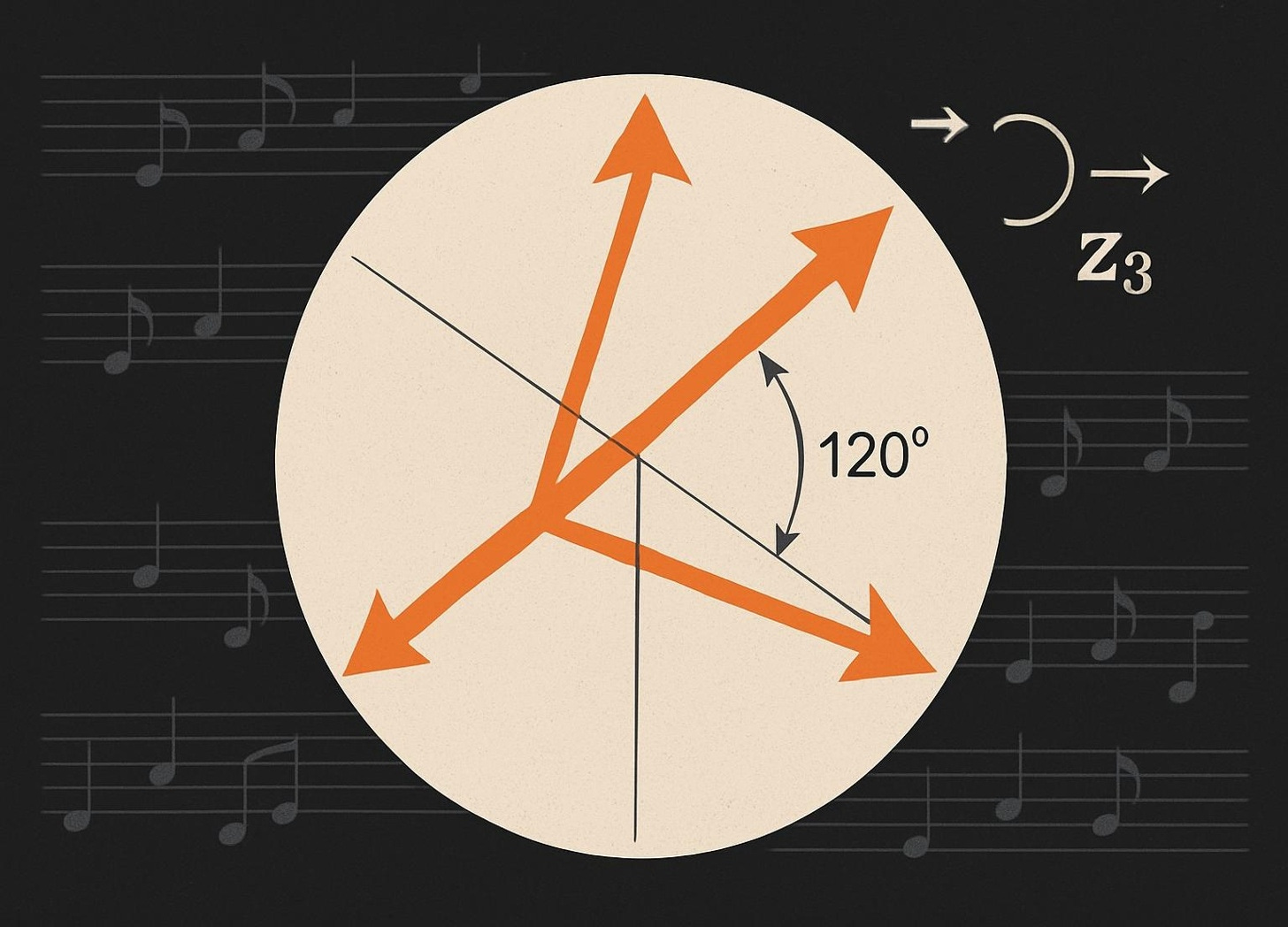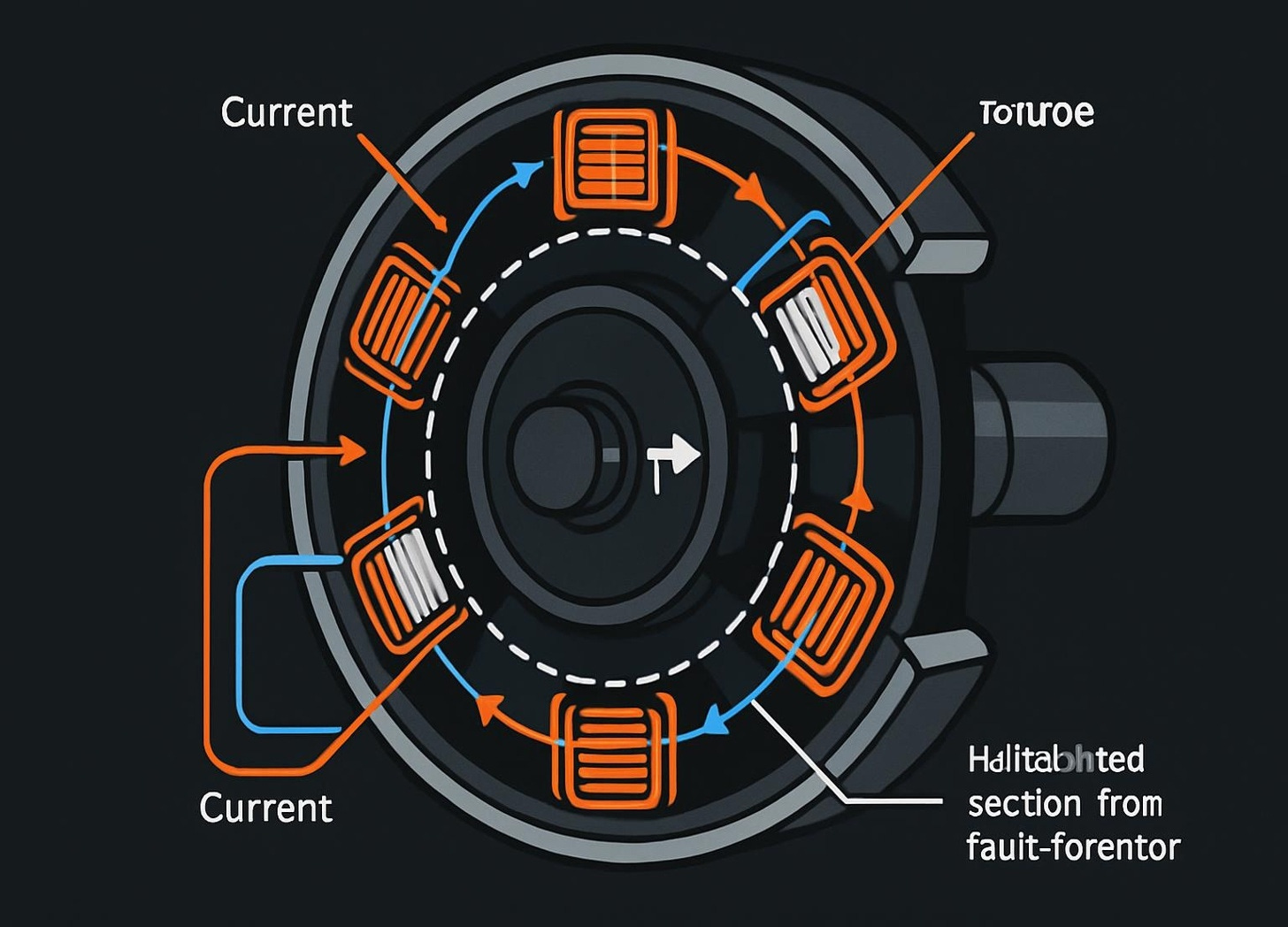Why Did Nikola Tesla Obsess Over 3, 6, and 9?
Harmonic Operators, Triads, and the Hidden Architecture of Power
🧲 Tesla’s lab routines revolved around three-phase setups, not just for show. There were deeper harmonic reasons.
I don’t think Tesla’s fascination with the numbers three, six, and nine was a random quirk. He saw these numbers as more than counters, treating them as operators that shaped both the structure of the universe and the mechanics of his inventions. This triadic mindset guided his experiments, from three-phase electrical systems to the timing of daily routines.
Tesla’s approach blended ancient Pythagorean numerology with modern engineering, using triads and their multiples to build resilient, efficient, and harmonically rich technologies. These numbers didn’t just influence his theories. They powered the actual circuits and routines that earned him a reputation as a visionary.
👉 Subscribe to Advanced Rediscovery. I’m sharing what I’m finding as I decode zero point energy, the quantum vacuum, and extended electromagnetism — 12+ years deep in 2000+ papers and counting. Weekly briefings from my home lab to your inbox.
In today’s briefing
🧲 Tesla’s triadic philosophy blended numerology with engineering.
⚡ Three-phase systems enabled harmonic balance and technical resilience.
🔬 Operator-based thinking reshaped power systems as harmonic structures.
🧩 Triad-of-triads multiphase designs boost torque and reliability.
🤔 Could scaling Tesla’s triads reveal new breakthroughs today?
Tesla’s Triadic Cosmology: Numerological and Practical Foundations
Tesla didn’t just just use numbers for counting; he treated three, six, and nine as operators—actions that generate order in both the universe and technology.
This triadic approach shaped his inventions, routines, and even his daily habits. The triad wasn’t just a mystical idea, but a practical tool for building resilient, harmonically balanced systems.
Tesla’s triadic cosmology visualized: three, six, and nine as the operators of harmony and invention.
Tesla’s Pythagorean worldview treated numbers as generative forces, not just tallies. The number three, and its multiples six and nine, served as organizing principles in his cosmology and engineering. This triadic logic appeared in the design of three-phase electrical systems, which use three alternating currents offset by 120 degrees to create continuous, balanced rotation.
In Tesla’s laboratory, triads showed up everywhere: circuits grouped in threes, experimental cycles repeated in three stages, and even the timing of daily routines. The preference for numbers divisible by three wasn’t superstition. It was a first-principles approach to achieving balance, resilience, and clarity in both theory and practice.
Multiples of three, such as six and nine, extend this logic. They allow for scalable, harmonic architectures, hinting at deeper patterns in nature and technology. Tesla’s triadic philosophy connects to ancient harmonic cosmologies, where musical ratios and resonance are seen as keys to the natural order. This mindset influenced not only his inventions but also the way he structured his work and life.
“If you only knew the magnificence of the 3, 6, and 9, then you would have the key to the universe.” — Nikola Tesla
Tesla’s triadic thinking created a bridge between ancient numerology and modern engineering. The triad and its multiples became both a technical advantage and a worldview, shaping how he built, analyzed, and lived.
Why it matters
🧲 Three, six, and nine acted as generative operators in Tesla’s systems.
⚡ Triadic routines and circuits improved balance and resilience.
🔬 Multiples of three hint at scalable harmonic architectures.
References [1–4]
Operator-Based Harmonics in Three-Phase Power Systems
In Pythagorean thinking, numbers aren’t just counters. They’re operators that generate rotation and harmony. This shift in perspective changes how three-phase power systems are understood.
Instead of seeing three-phase as a utility standard, versor algebra and operator-based mathematics reveal it as a unique harmonic structure with deep geometric roots.
Three-phase power visualized as operator-driven harmonics, uniting math, music, and energy.
When numbers are viewed as operators, three-phase systems become more than just sets of wires. Each phase acts as a rotational action, generating balance and orchestrated energy flows.
The triple-phase operator defines a family of harmonics distinct from the familiar sine-cosine mathematics of quadrature alternating current (AC):
Versor algebra provides tools for modeling these systems, where each phase advances the state through cyclic divisions. This approach uncovers new patterns in system analysis and device design, making it possible to intentionally shape resistance, reactance, and other properties, much like composing with musical counterpoint.
Tesla’s rotating magnetic field, and archetypes like the solar cross, ground three-phase systems in geometric and harmonic principles. Operator-based methods allow for more deliberate energy routing and system control, suggesting that engineering can benefit from thinking in terms of harmonic actions rather than just numbers. Standard mathematical tools often fall short for tripartite division, so alternative bases are needed to fully capture three-phase harmonics.
“Three-phase power is not just a practical solution. It is a harmonic family, grounded in universal operator logic.” — Eric Dollard
Reimagining phase systems as operator actions opens new possibilities in electrical engineering. This approach could lead to novel device topologies and more efficient control strategies, inspired by harmonic logic rather than scalar counting.
Why it matters
🧲 Operator-based thinking treats phases as harmonic actions.
🔬 Versor algebra models three-phase systems beyond standard math.
⚡ Harmonic logic enables new energy routing and device designs.
References [1, 3, 5]
Triad-of-Triads: Multiphase Electrical Systems—Torque, Reliability, and Power Quality
What if Tesla’s triadic logic didn’t stop at three? Designing six- or nine-phase systems as triad-of-triads architectures brings new performance gains.
These multiphase designs offer smoother torque, greater reliability, and better power quality, all by scaling up the triadic principle.
Triad-of-triads multiphase systems: more phases, smoother torque, and robust reliability.
Increasing the phase count to six or nine, organized as triad-of-triads, means more frequent, smaller current impulses per revolution. This smooths out torque, reduces vibration, and minimizes flux fluctuations. Even pole counts and precise phase relations further harmonize electromagnetic action, making machines more efficient and reliable.
Multiphase generators create more symmetric waveforms, lowering per-phase loading and improving power quality under changing conditions. Rectified or synthesized direct current (DC) outputs from these systems have less ripple, simplifying filtering and boosting efficiency. Independent phase circuits also enhance fault tolerance, allowing continued operation even if some phases fail.
Speed control becomes more flexible, as multiphase sources let engineers reconfigure pole-pair and coil groupings for wide-range, smooth speed scaling. Higher phase counts reduce core losses, letting machines run closer to core saturation with lower exciting currents. Startup and self-excitation are more robust, with finer phase alignment and gentler transients.
“A triad-of-triads system produces a field nearly indistinguishable from continuous rotation, minimizing torque ripple.” — PJ Kelly
Triad-of-triads architectures show how scaling Tesla’s logic can solve practical engineering challenges. These systems promise smoother operation, higher reliability, and new ways to control power and motion.
Why it matters
🧩 Triad-of-triads systems smooth torque and boost efficiency.
⚡ More phases improve power quality and fault tolerance.
🔬 Flexible control and startup are easier with multiphase designs.
References [6–7]
Final Thoughts
I see Tesla’s use of three, six, and nine as organizing operators showing a fusion of ancient numerology and modern engineering. He structured experiments and inventions around triadic patterns, aiming for balance and resonance. The evidence points to clear technical benefits: smoother torque, resilient systems, and harmonically aligned operations.
Assuming Tesla’s triadic logic holds, extending these patterns to higher phase counts could reveal new possibilities in energy, control, and system design. The hypothesis emerges. What if the universe itself prefers structures divisible by three, and engineering can harness that? Open questions remain about the limits and applications of this approach, inviting further exploration.
Quick Recap
🧲 Tesla used triads as harmonic operators, not just counters.
⚡ Three-phase systems yield balance and smoother operation.
🧩 Triad-of-triads designs boost torque and reliability.
🤔 Scaling triadic logic could reveal new engineering insights.
💡 Challenge the ordinary. What if your next project embraced triadic or multiphase design? Share your experiments or theories. Let’s see if Tesla’s numbers hold up in the lab and on the grid.
Glossary
Operator: A mathematical or conceptual action that transforms or generates states, rather than simply counting.
Triad: A group or structure based on three elements, often used for balance and harmony in systems.
Versor Algebra: A mathematical system using operators to describe rotational actions and phase relations, key to three-phase analysis.
Three-Phase System: An electrical system using three alternating currents, each offset by 120°, to create balanced and efficient power.
Triad-of-Triads: A multiphase system organized as groups of three, such as six or nine phases, for improved performance.
Symmetrical Components: An analytical method that decomposes unbalanced systems into balanced sets, often using triadic logic.
Harmonic: A component of a signal or system that is a whole-number multiple of a fundamental frequency, important in resonance.
Pythagorean Numerology: An ancient system viewing numbers as generative principles with structural and harmonic significance.
Torque Ripple: Variation in torque output, often reduced by using more phases in electrical machines.
Resonance: A condition where a system naturally oscillates at specific frequencies, leading to enhanced response or stability.
Sources & References
Dollard EP. True Electromagnetism of Nikola Tesla.
Anonymous PhDs. The Philadelphia Experiment.
Dollard EP. Collected Articles.
Tesla N. Colorado Springs Notes. 1978.
Dollard EP. Symbolic Representation of the Generalized Electric Wave. 1985.
Tesla N. Complete US Patents.
Kelly PJ. Practical Guide to ‘Free Energy’ Devices. 2020.
🧑🏼 Follow @drxwilhelm on X Twitter, Substack, Medium, TikTok, YouTube






